Sun Odyssey 479 Deep draft
Sailboat specifications
The Sun Odyssey 479 is a 44’10” (13.65m) cruising sailboat designed by Philippe Briand (France). She was built between 2015 and 2017 by Jeanneau (France). The Deep draft version offers a deeper L-shaped keel bringing extra performance especially upwind.
The Sun Odyssey 479 has also been marketed as Sun Odyssey 469 and she is as well listed, on Boat-Specs.com, in Shoal draft version (see all the versions compared).
The Sun Odyssey 479 has also been marketed as Sun Odyssey 469 and she is as well listed, on Boat-Specs.com, in Shoal draft version (see all the versions compared).
Sun Odyssey 479's main features
- Model
- Sun Odyssey 479
- Version
- Deep draft
- Hull type
- Monohull
- Category
- Offshore cruising sailboat
- Sailboat builder
- Sailboat designer
- Sailboat range
- Country
- France
- Construction
- GRP (glass reinforced polyester):
- Hull: Single skin fiberglass polyester
- Deck: Sandwich fiberglass polyester - First built hull
- 2015
- Last built hull
- 2017
- Appendages
- Keel : L-shaped keel (with bulb)
- Helm
- Twin helm wheels
- Rudder
- Single spade rudder
- Unsinkable
- No
- Trailerable
- No
- EC design categoryiThe CE design category indicates the ability to cope with certain weather conditions (the sailboat is designed for these conditions)
A: Wind < force 9, Waves < 10m
B: Wind < force 8, Waves < 8m
C: Wind < force 6, Waves < 4m
D: Wind < force 4, Waves < 0,5m - A
- Standard public price ex. VAT (indicative only)
- N/A €
Sun Odyssey 479's main dimensions
- Overall length
- 46’ 1”14.05 m
- Hull length
- 44’ 10”13.65 m
- Waterline length
- 41’ 1”12.54 m
- Beam (width)
- 14’ 8”4.49 m
- Draft
- 7’ 4”2.24 m
- Light displacement (MLC)
- 23830 lb10809 kg
- Ballast weight
- 6823 lb3095 kg
- Ballast type
- Cast iron
Sun Odyssey 479's rig and sails
- Upwind sail area
- 1034 ft²96.1 m²
- Downwind sail area
- 1442 ft²134 m²
- Mainsail area
- 534 ft²49.6 m²
- Genoa area
- 501 ft²46.5 m²
- Code 0 area
- 908 ft²84.4 m²
- Rigging type
- Sloop Marconi fractional
- Mast configuration
- Deck stepped mast
- Rotating spars
- No
- Number of levels of spreaders
- 2
- Spreaders angle
- Swept-back
- Spars construction
- Aluminum spars
- Standing rigging
- 1x19 strand wire
Sun Odyssey 479's performances
- Upwind sail area to displacementiThe ratio sail area to displacement is obtained by dividing the sail area by the boat's displaced volume to the power two-thirds.
The ratio sail area to displacement can be used to compare the relative sail plan of different sailboats no matter what their size.
Upwind: under 18 the ratio indicates a cruise oriented sailboat with limited performances especially in light wind, while over 25 it indicates a fast sailboat. - 212 ft²/T19.66 m²/T
- Downwind sail area to displacementiThe ratio sail area to displacement is obtained by dividing the sail area by the boat's displaced volume to the power two-thirds.
The ratio sail area to displacement can be used to compare the relative sail plan of different sailboats no matter what their size. - 295 ft²/T27.41 m²/T
- Displacement-length ratio (DLR)iThe Displacement Length Ratio (DLR) is a figure that points out the boat's weight compared to its waterline length. The DLR is obtained by dividing the boat's displacement in tons by the cube of one one-hundredth of the waterline length (in feet).
The DLR can be used to compare the relative mass of different sailboats no matter what their length:
a DLR less than 180 is indicative of a really light sailboat (race boat made for planning), while a DLR greater than 300 is indicative of a heavy cruising sailboat. - 155
- Ballast ratioiThe Ballast ratio is an indicator of stability; it is obtained by dividing the boat's displacement by the mass of the ballast. Since the stability depends also of the hull shapes and the position of the center of gravity, only the boats with similar ballast arrangements and hull shapes should be compared.
The higher the ballast ratio is, the greater is the stability. - 29 %
- Critical hull speediAs a ship moves in the water, it creates standing waves that oppose its movement. This effect increases dramatically the resistance when the boat reaches a speed-length ratio (speed-length ratio is the ratio between the speed in knots and the square root of the waterline length in feet) of about 1.2 (corresponding to a Froude Number of 0.35) . This very sharp rise in resistance, between speed-length ratio of 1.2 to 1.5, is insurmountable for heavy sailboats and so becomes an apparent barrier. This leads to the concept of "hull speed".
The hull speed is obtained by multiplying the square root of the waterline length (in feet) by 1.34. - 8.60 knots
Sun Odyssey 479's auxiliary engine
- Engine(s)
- 1 inboard engine
- Engine(s) power
- 54 HP
- Fuel type
- Diesel
- Fuel tank capacity
- 63.4 gal240 liters
Sun Odyssey 479's accommodations and layout
- Cockpit
- Closing aft cockpit with opening system
- Cabin(s) (min./max.)
- 3 / 4
- Berth(s) (min./max.)
- 8 / 11
- Head(s) (min./max.)
- 2 / 4
- Freshwater tank capacity
- 159.8 gal605 liters
- Maximum headroom
- 6’ 6”1.97 m
- Head headroom
- 6’ 2”1.88 m
Sun Odyssey 479's saloon
- Maximum headroom
- 6’ 5”1.95 m
- Saloon table length
- 4’1.21 m
- Saloon table width
- 3’ 4”1 m
- Berth length
- 6’ 11”2.1 m
- Berth width
- 2’ 2”0.68 m
Sun Odyssey 479's fore cabin
- Maximum headroom
- 6’ 4”1.92 m
- Berth length
- 6’ 8”2.05 m
- Berth width
- 5’ 2”1.6 m
Sun Odyssey 479's aft cabin
- Maximum headroom
- 6’ 5”1.96 m
- Berth length
- 6’ 8”2.05 m
- Berth width
- 4’ 7”1.4 m

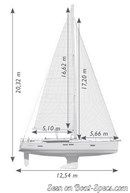

Jeanneau Sun Odyssey 479 sailplan - - 2/15
Picture extracted from the commercial documentation © Jeanneau
Picture extracted from the commercial documentation © Jeanneau
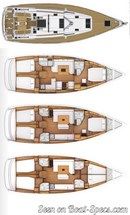

Jeanneau Sun Odyssey 479 layout - - 3/15
Picture extracted from the commercial documentation © Jeanneau
Picture extracted from the commercial documentation © Jeanneau


Jeanneau Sun Odyssey 479 sailing - - 4/15
Picture extracted from the commercial documentation © Jeanneau
Picture extracted from the commercial documentation © Jeanneau


Jeanneau Sun Odyssey 479 sailing - - 5/15
Picture extracted from the commercial documentation © Jeanneau
Picture extracted from the commercial documentation © Jeanneau


Jeanneau Sun Odyssey 479 sailing - - 6/15
Picture extracted from the commercial documentation © Jeanneau
Picture extracted from the commercial documentation © Jeanneau
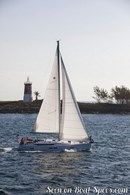

Jeanneau Sun Odyssey 479 sailing - - 7/15
Picture extracted from the commercial documentation © Jeanneau
Picture extracted from the commercial documentation © Jeanneau


Jeanneau Sun Odyssey 479 sailing - - 8/15
Picture extracted from the commercial documentation © Jeanneau
Picture extracted from the commercial documentation © Jeanneau


Jeanneau Sun Odyssey 479 sailing - - 9/15
Picture extracted from the commercial documentation © Jeanneau
Picture extracted from the commercial documentation © Jeanneau


Jeanneau Sun Odyssey 479 cockpit - - 10/15
Picture extracted from the commercial documentation © Jeanneau
Picture extracted from the commercial documentation © Jeanneau


Jeanneau Sun Odyssey 479 interior and accommodations - - 11/15
Picture extracted from the commercial documentation © Jeanneau
Picture extracted from the commercial documentation © Jeanneau


Jeanneau Sun Odyssey 479 interior and accommodations - - 12/15
Picture extracted from the commercial documentation © Jeanneau
Picture extracted from the commercial documentation © Jeanneau
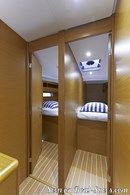

Jeanneau Sun Odyssey 479 interior and accommodations - - 13/15
Picture extracted from the commercial documentation © Jeanneau
Picture extracted from the commercial documentation © Jeanneau


Jeanneau Sun Odyssey 479 interior and accommodations - - 14/15
Picture extracted from the commercial documentation © Jeanneau
Picture extracted from the commercial documentation © Jeanneau
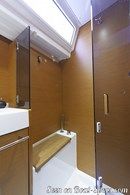

Jeanneau Sun Odyssey 479 interior and accommodations - - 15/15
Picture extracted from the commercial documentation © Jeanneau
Picture extracted from the commercial documentation © Jeanneau
Similar sailboats that may interest you:
Sailboats
First built hull
Hull length
2012
44’ 10”13.65 m
2010
42’ 7”12.98 m
2011
44’ 4”13.5 m
2012
45’ 4”13.82 m
2011
46’ 10”14.27 m
1988
52’ 6”16 m
2015
49’ 1”14.98 m
2015
44’ 10”13.65 m
2016
42’ 7”12.99 m
2017
50’ 11”15.51 m
2017
45’ 11”14 m
2017
41’ 6”12.64 m
2010
45’13.72 m
2018
42’ 7”12.99 m
2018
44’ 10”13.65 m